Nine Women Named Pew Scholars in the Biomedical Sciences
Posted on Aug 02, 2016 | Comments 0
 The Pew Charitable Trusts named 22 early-career scholars as this year’s cohort of Pew Scholars in the Biomedical Sciences. Each scholar will receive funding to pursue their research for four years.
The Pew Charitable Trusts named 22 early-career scholars as this year’s cohort of Pew Scholars in the Biomedical Sciences. Each scholar will receive funding to pursue their research for four years.
Pew Scholars meet once each year to discuss their research among their peers, explore different areas of biomedical science, and spark innovation in their fields. Rebecca W. Rimel, president and CEO of the Pew Charitable Trusts stated “the members of this exemplary group join a community of scientists that they will learn with, and learn from, for the rest of their lives.”
Of this year’s 22 Pew Scholars in the Biomedical Sciences, nine are women.
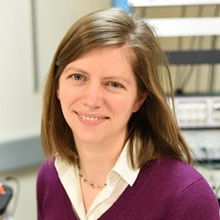 Martha W. Bagnall is an assistant professor at the Washington University School of Medicine in St. Louis. Her research focuses on how the nervous system senses spatial orientation and routes this information through the spinal cord in order to shape motor activity. A graduate of Yale University, she earned a Ph.D. at the University of California, San Diego.
Martha W. Bagnall is an assistant professor at the Washington University School of Medicine in St. Louis. Her research focuses on how the nervous system senses spatial orientation and routes this information through the spinal cord in order to shape motor activity. A graduate of Yale University, she earned a Ph.D. at the University of California, San Diego.
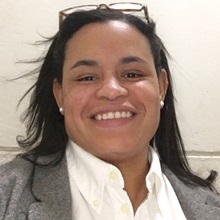 Donita C. Brady is an assistant professor in the department of cancer biology at medical school of the University of Pennsylvania in Philadelphia. Dr. Brady is a graduate of Radford University in Virginia, where she majored in chemistry. She holds a Ph.D. in pharmacology and cancer biology from the University of North Carolina at Chapel Hill.
Donita C. Brady is an assistant professor in the department of cancer biology at medical school of the University of Pennsylvania in Philadelphia. Dr. Brady is a graduate of Radford University in Virginia, where she majored in chemistry. She holds a Ph.D. in pharmacology and cancer biology from the University of North Carolina at Chapel Hill.
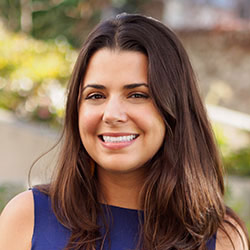 Gloria A. Brar is an assistant professor in the department of molecular and cellular biology at the University of California, Berkeley. Her research is focused on meiosis, the highly conserved cellular process by which gametes are produced. Dr. Brar is a graduate of the University of California, Berkeley and holds a Ph.D. in biology from the Massachusetts Institute of Technology.
Gloria A. Brar is an assistant professor in the department of molecular and cellular biology at the University of California, Berkeley. Her research is focused on meiosis, the highly conserved cellular process by which gametes are produced. Dr. Brar is a graduate of the University of California, Berkeley and holds a Ph.D. in biology from the Massachusetts Institute of Technology.
 Wendy R. Gordon is an assistant professor in the department of biochemistry, molecular biology, and biophysics at the University of Minnesota in Minneapolis. Her research concerns how cells sense and respond to mechanical forces in their environment at a molecular level. She joined the faculty at the University of Minnesota in 2014. Dr. Gordon is a graduate of the University of Virginia and holds a Ph.D. in physical chemistry from the University of Chicago.
Wendy R. Gordon is an assistant professor in the department of biochemistry, molecular biology, and biophysics at the University of Minnesota in Minneapolis. Her research concerns how cells sense and respond to mechanical forces in their environment at a molecular level. She joined the faculty at the University of Minnesota in 2014. Dr. Gordon is a graduate of the University of Virginia and holds a Ph.D. in physical chemistry from the University of Chicago.
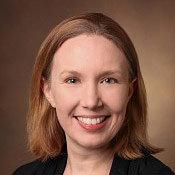 Lauren Parker Johnson in an assistant professor in the department of biological sciences at Vanderbilt University in Nashville, Tennessee. Her lab explores the molecular systems that direct the trafficking of cargo such as proteins and fatty lipid molecules around the inside of a cell. Dr. Jackson completed her Ph.D. at the MRC Laboratory of Molecular Biology at Trinity College of the University of Cambridge in England.
Lauren Parker Johnson in an assistant professor in the department of biological sciences at Vanderbilt University in Nashville, Tennessee. Her lab explores the molecular systems that direct the trafficking of cargo such as proteins and fatty lipid molecules around the inside of a cell. Dr. Jackson completed her Ph.D. at the MRC Laboratory of Molecular Biology at Trinity College of the University of Cambridge in England.
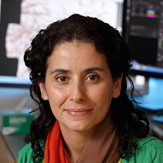 Eyleen J. O’Rourke is an assistant professor of biology at the University of Virginia in Charlottesville. Before joining the faculty at the University of Virginia in 2014, she was an instructor at Harvard Medical School. Dr. O’Rourke holds a master’s degree from the National University of Misiones in Argentina and a Ph.D. in biochemistry and molecular biology from the University of Buenos Aires.
Eyleen J. O’Rourke is an assistant professor of biology at the University of Virginia in Charlottesville. Before joining the faculty at the University of Virginia in 2014, she was an instructor at Harvard Medical School. Dr. O’Rourke holds a master’s degree from the National University of Misiones in Argentina and a Ph.D. in biochemistry and molecular biology from the University of Buenos Aires.
 Katherine S. Ralston is an assistant professor in the department of microbiology and molecular genetics at the University of California, Davis. She conducts research on parasites in humans. Dr. Ralston holds a bachelor’s degree in genetics from the University of California, Davis and a Ph.D. in microbiology from the University of California, Davis.
Katherine S. Ralston is an assistant professor in the department of microbiology and molecular genetics at the University of California, Davis. She conducts research on parasites in humans. Dr. Ralston holds a bachelor’s degree in genetics from the University of California, Davis and a Ph.D. in microbiology from the University of California, Davis.
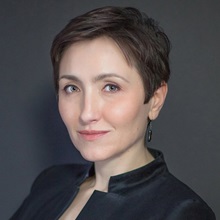 Dragana Rogulja is an assistant professor of neurobiology at Harvard Medical School. Her research examines how incoming sensory information is muted during sleep, particularly in the context of an aging brain. A native of Belgrade in Serbia, Dr. Rogulja holds a bachelor’s degree and a Ph.D. from Rutgers University in New Jersey.
Dragana Rogulja is an assistant professor of neurobiology at Harvard Medical School. Her research examines how incoming sensory information is muted during sleep, particularly in the context of an aging brain. A native of Belgrade in Serbia, Dr. Rogulja holds a bachelor’s degree and a Ph.D. from Rutgers University in New Jersey.
 Radhika Subramanian is an assistant professor of molecular biology in the department of genetics at Harvard Medical School. Her research will investigate how the primary cilium, a small solitary structure that extends from the surface of the cell as its “antenna,” serves as a major signaling hub for mediating cell-to-cell communication.
Radhika Subramanian is an assistant professor of molecular biology in the department of genetics at Harvard Medical School. Her research will investigate how the primary cilium, a small solitary structure that extends from the surface of the cell as its “antenna,” serves as a major signaling hub for mediating cell-to-cell communication.
Filed Under: Featured








